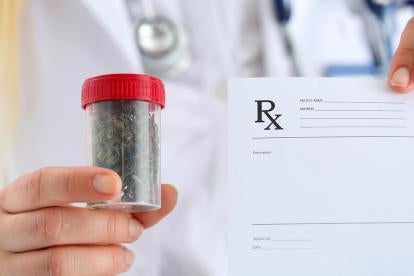Like many sports fans, we’re suckers for next-season predictions immediately following the prior season (even when Notre Dame is inexplicably ranked in the Top 10). At the time of this writing, applications have just been submitted for the initial round of medical cannabis licenses in Alabama – and the licenses will not be awarded until July 2023 at the earliest. So what’s next for to-be licensees or those who missed out on the this first round?
There is absolutely no indication at this time that any licenses will be awarded after this initial round. But if the history of medical cannabis programs in other states is a guide, Alabama is likely to expand the program over time. And because we went to the trouble of starting a cannabis blog, we’ll take a stab at predicting what those expansions may look like and the opportunities both for those who are awarded initial licenses and those who did not participate in this initial round.
We see five ways that Alabama’s medical program may expand. Each is described below, as well as my prediction at a timetable, based on currently available information:
1. Broadening the conditions that qualify for medical cannabis
Alabama currently allows doctors to certify patients to receive medical cannabis if they suffer from one of the following qualifying conditions:
-
Autism spectrum disorder (ASD);
-
Cancer-related cachexia, nausea or vomiting, weight loss, or chronic pain;
-
Crohn’s disease;
-
Depression;
-
Epilepsy or a condition causing seizures;
-
HIV/AIDS-related nausea or weight loss;
-
Panic disorder;
-
Parkinson’s disease;
-
Persistent nausea that is not significantly responsive to traditional treatment, except for nausea related to pregnancy, cannabis-induced cyclical vomiting syndrome, or cannabinoid hyperemesis syndrome;
-
Post-traumatic stress disorder (PTSD);
-
Sickle cell anemia;
-
Spasticity associated with a motor neuron disease, including amyotrophic lateral sclerosis (ALS);
-
Spasticity associated with multiple sclerosis (MS) or a spinal cord injury;
-
A terminal illness;
-
Tourette’s syndrome; and
-
A condition causing chronic or intractable pain in which conventional therapeutic intervention and opiate therapy is contraindicated or has proved ineffective.
These are important conditions, and those suffering from the conditions may well benefit from medical cannabis. But the list is more restrictive than the qualifying conditions in many other states. Common qualifying conditions in other states with medical cannabis programs also include, for example:
-
Agitation of dementia
-
Alzheimer’s disease
-
Anorexia
-
Arthritis
-
Chronic renal failure requiring hemodialysis
-
Fibromyalgia
-
Glaucoma
-
Hepatitis C
-
Huntington’s disease
-
Migraines
-
Muscular dystrophy
-
Peripheral neuropathy
-
Spastic quadriplegia
-
Traumatic brain injuries
-
Ulcerative colitis
-
Other states also tend to include broader catchall categories of qualifying conditions, such as:
-
Arkansas – “Any other medical condition or its treatment approved by the Department of Health”
-
California – “Your physician can also recommend cannabis to help with chronic or persistent medical symptoms that either:
-
Substantially limit your ability to conduct major life activities
-
May cause serious harm to your safety, physical health or mental health”
-
-
Florida – “Medical conditions of the same kind or class as or comparable to the others listed”
-
We believe there is a good chance the Alabama Legislature will expand the list of qualifying conditions in the future. They are unlikely to do so, however, until there is evidence of how the existing program is working. Given that medical cannabis is unlikely to reach the public until around the beginning of the 2024 legislative session, my guess is that the list of conditions won’t be expanded by the legislature until the first half of 2025.
2. More allowable form factors
Alabama currently allows medical cannabis to be dispensed in the following forms:
-
Oral tablet, capsule, or tincture;
-
Non-sugarcoated gelatinous cube, gelatinous rectangular cuboid, or lozenge in a cube or rectangular cuboid shape;
-
Gel, oil, cream, or other topical preparation;
-
Suppository;
-
Transdermal patch;
-
Nebulizer; and
-
Liquid or oil for administration using an inhaler.
Most notably, Alabama does not allow medical cannabis in a flower form, which as a practical matter means that medical cannabis cannot be dispensed in a smokable form. That is a departure from most states with medical cannabis programs and will make Alabama the only state with a medical cannabis program that doesn’t allow the sale of flower.
The following states with medical cannabis programs allow smokeable flower:
-
Alaska
-
Arizona
-
California
-
Colorado
-
Connecticut
-
Delaware
-
District of Columbia
-
Florida
-
Guam
-
Hawaii
-
Illinois
-
Louisiana
-
Maine
-
Maryland
-
Massachusetts
-
Michigan
-
Missouri
-
Montana
-
Nevada
-
New Hampshire
-
New Jersey
-
New Mexico
-
New York
-
North Dakota
-
Ohio
-
Oklahoma
-
Oregon
-
Pennsylvania
-
Puerto Rico
-
Rhode island
-
Vermont
-
U.S. Virgin Islands
-
Utah
-
Virginia (with some limitations)
-
Washington
-
West Virginia (only for terminally ill patients)
The generally understood benefits of using smokeable flower as a form of medicine are:
-
Rapid delivery
-
Ease of dosing
-
Short duration of peak effects
-
Limited duration of effects relative to other methods being considered for medicinal purposes (e.g., oral, sublingual and transdermal)
-
The entourage effect of multiple compounds working together
-
The capability to vaporize flower and avoid any negatives associated with combustion
-
Vaporization also makes inhalation easier for those with sensitive lungs or lung diseases.
-
Additionally, smokeable flower requires less processing and is therefore inherently cheaper than secondary medical products made from cannabis.
Although there is evidence that smoking cannabis flower can cause injury to airways, studies have shown that smoking flower neither causes significant adverse effects nor significantly increases risks of lung disease and infection.
All of these facts aside, if history is a guide then we can expect the Alabama Legislature to allow for smokeable flower as an acceptable form of medical cannabis in the coming legislative sessions.
3. More facilities for existing licensees
One way that a state can expand its medical cannabis program is to allow its existing licensees to open additional facilities. This allows current licensees to expand their current infrastructure without introducing totally new players into the state’s cannabis industry.
Current licensees bring with them knowledge of the state’s medical cannabis market and the logistics of getting cannabis into patients’ hands in their specific state of operation. The existing licensees know the market and can expand their operations over time without flooding the market with product or creating other serious negative externalities.
4. More licensees
In addition to, or instead of, expanding the number of facilities for existing licensees, states may award more licenses to grow their medical cannabis programs.
On the one hand, awarding more licenses allows greater market participation, driving prices down and creating more access to medical cannabis for patients across Alabama.
On the other hand, inexperienced new licensees may create minor chaos in the market as they learn the nuances of running a medical cannabis business. And existing licensees might be edged out by new competition and big investors who wait for original licensees to weather early market fluctuations, especially if Alabama allows large, out-of-state cannabis operations to control the market.
5. Adult use
Finally, and with apologies for burying the lede, the most dramatic and immediate way to expand Alabama’s cannabis program is to shift from a medical cannabis program to an adult-use program (often referred to as “recreational marijuana”). The patient base would exponentially expand immediately. As a practical matter, however, the Alabama legislature is unlikely to take this significant step in the next two or three years. Eventually, perhaps, as legislators realize that the medical program is working and if (as we expect) state and national opinions regarding cannabis continue to liberalize, the legislature may take that step.
The recent midterm elections provide some guidance on how this may play out. As we recently noted, Maryland and Missouri passed adult-use initiatives. Arkansas, South Dakota, and North Dakota all had measures fail. If there is any major takeaway after these votes, it is that typically the best predictor of a state passing an adult-use initiative is how long that state has had a medical-use program in place. Outside of Missouri, most states need a significant period of time for their population to grow comfortable with a medical-use program before passing a full adult-use program.
Conclusion
“Prediction,” goes an old Danish proverb (or, depending on who you ask, the late Yogi Berra) “is hazardous, especially about the future.” And let’s be clear: Alabama’s medical cannabis program is extraordinarily unlikely to change in a material way until at least Spring of 2024.
Even though it won’t happen immediately, it will happen. And while I don’t think he was talking about marijuana, I’ll leave the last word to a Mississippian of all people – the great Sam Cooke: “A change gone come, oh yes it will.”





 i
i

